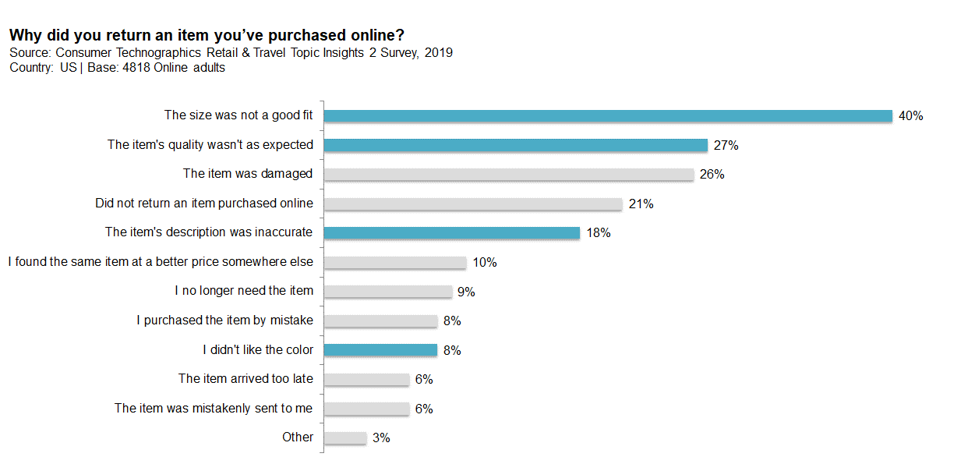Great Product Experiences Start With Great Product Data
Product information management (PIM) tools help marketing and product teams ingest, enrich, and distribute product data — but the functional description sells the full value of PIM short. The mandate to support product experience continues to grow in prominence within the PIM world. By now, most people in the field nod along at variations of “great product data drives great product experiences.” Great product experiences are the why; managing product data is part of the how.
But there is still a lot of room for improvement in turning the concept into reality! Take a look at why customers return things online as an example of product data’s impact on the bottom line. Better product data directly impacts many of these pain points:

Don’t hold your breath that 2020 will be the year everyone gets it right, but do expect big interest in this topic. So then, what is next in the evolution of product experience management?
Enterprise-Level Attention
Product companies must think of product data like customer data: mission-critical.

Of course, traditional PIM functionality like onboarding supplier data and syndicating product data to eComm channels doesn’t become any less important. But delivering consistent, quality product experiences at an enterprise level will evolve the role of PIM and its users. I expect this evolution to play out across three Cs in 2020:
- Collaboration: PIM is part of the marriage of business and IT. Managing product experience requires close collaboration across different functions to turn complete and accurate product data into relevant and compelling experiences. PIM, or at least its contents, no longer serves only the needs of an individual marketing or IT team but gets plugged into the digital experience stack — bridging the needs for a product data source of truth and a blank slate for creatives! PIM vendors like Akeneo and Salsify are continuing work on product roadmaps that include richer content analytics, easier integrations, and improved user experiences to support this collaboration.
- Confusion: Like any union, this is for better and for worse! Creating an enterprise PIM strategy will lead to questions such as: How should PIM integrate with other tools like commerce platforms, DAMs, or MDM? Does it replace other categories? Does it get replaced by other tools? Where are the lines between product data and rich product content like how-to videos? (If you are reading this list and nodding, fear not, as these are questions we are exploring in 2020. If you’re reading this list and mentally adding to it, reach out and share them with me!)
- Consolidation: Or rather, some overlapping functionality. There are overlaps between the needs of managing product data and other types of data. And in some cases, the lines between certain classifications of data and assets are blurring. Vendors see their customers’ challenges. They see opportunity (and $$$) to help solve them. In 2020, we’ll also see vendors in this space continue to build out functionality that bumps into other categories. (By the way, this is already well underway, particularly in the PIM/DAM overlap — for example, inRiver, Riversand, and Stibo are a handful of PIM vendors all offering some DAM capabilities).
Agree? Disagree? More confused? Let’s talk! Forrester clients can schedule an inquiry with me here.
